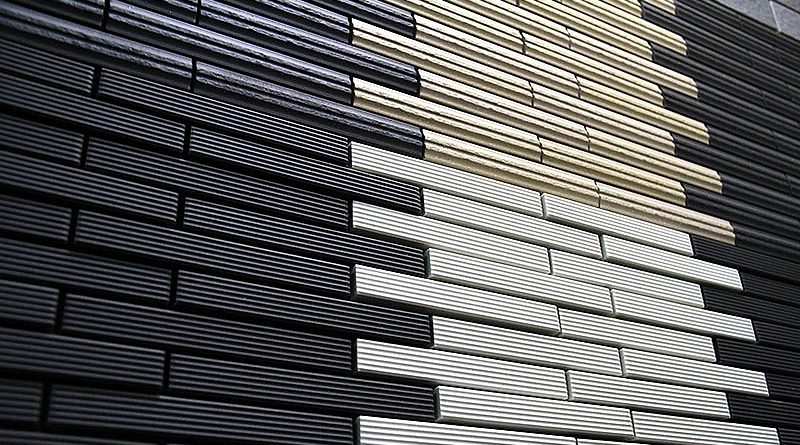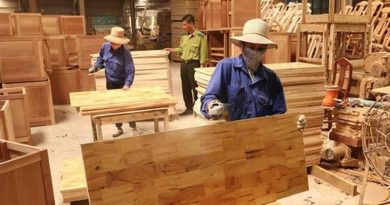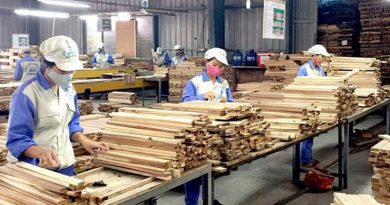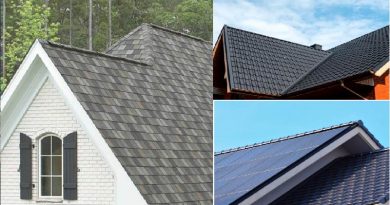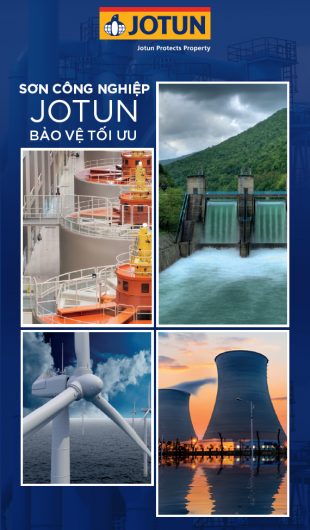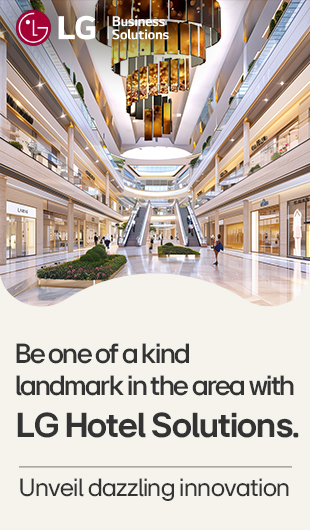Recycled building materials struggle for development
Recycled building materials struggle for development
Traditional natural building materials are being gradually depleted and have shown great limitations, while the development of new and artificial types of building materials has encountered difficulties.
 |
| Recycled building materials struggle for development |
New materials full of potential and challenges
The domestic building material sector has been developing rapidly in the past years, basically meeting the domestic market demand and looking for export opportunities. Efforts were put into studying and developing new kinds of materials to gradually replace natural ones, with the most popular types being prestressed concrete and non-baked bricks made of gypsum, ash, and cinder derived from thermal power and cement plants.
Imported materials are often diversified and high-grade types that could not be produced domestically, such as concrete canvas (CC), fibre-reinforced concrete (FRC), high-grade facing tiles, as well as plastic and bamboo flooring. For simple items like decorative wall panels made of fly ash, local firms have accepted technology transfer from South Korea.
With respect to prestressed concrete, the product was subject to studies and experiments and has proven successful with diverse advantages, such as pressure resistance, lower cost, and environment-friendliness. In addition, as the components are pre-produced, the quality of this concrete material is closely controlled, ensuring high stability during production. Significantly, the product can save about 30-45 per cent on construction time.
Unlike prestressed concrete and Acotec wall panels that are fairly popular, some other kinds of new materials face difficulties in practical application, despite the products having many advantages. For instance, concrete canvas, a kind of geosynthetic cementitious composite mat (GCCM) that is ready mixed, is easy to use and transport and can significantly shorten execution time compared to conventional concrete.
“We pegged high hopes on the supply and distribution of concrete canvas, but as the price remains fairly high, not many firms are interested in the product despite its diverse advantages. We import the whole product from the UK and have proposed our foreign partner to transfer the technology or build production factories in Vietnam, but they have yet to agree,” said the director of a concrete canvas distribution company.
Fibre-reinforced concrete is a latecomer in the Vietnamese market. This type of concrete contains steel fibres, helping to increase structural integrity. The product helps totally eliminate the use of steel bars in concrete, saving 10-30 per cent of material costs. In addition, fibre-reinforced concrete has also contributed to reducing execution time while enhancing the concrete’s endurance and anti-corrosion features. The product usage, however, faces a psychological ‘barrier’ in customers’ cautiousness in using new products.
“In fact, more than a few companies have been using fibre-reinforced concrete for their projects, but they are mostly foreign businesses. Local firms, while praising the product’s advantages, have yet to use it for their projects out of cautiousness. The demand for this product, therefore, is below expectations,” said a representative from a firm engaged in supplying steel fibre and fibre-reinforced concrete technology transfer.
Meanwhile, a representative from a firm engaged in technology transfer for the production of concrete panels made of fly ash, gypsum, cement, sand, gravel, water, and additives (to replace facing stones) said, “Our products are mainly for export to South Korea, as the domestic market still pays little attention to them.”
Recycled materials: baby steps
Apart from new materials, Vietnam is stepping up efforts to promote the use and application of environmentally friendly replacement materials such as non-baked bricks made of ash, cinder and gypsum from cement and thermal power plants. The use of these products, however, also faces diverse challenges.
In Vietnam, only about 10 per cent of ash and cinder waste is being used in building material production, while the remaining 90 per cent is buried, causing harm to the environment. In other countries, up to 80-90 per cent of ash and cinder waste is utilised.
In a recent talk about current ash and cinder waste usage in the province, Deputy Chairman of the Tra Vinh People’s Committee Nguyen Trung Hoang said, “Our province has completed reviewing the use of ash and cinder waste in Duyen Hai 1 and Duyen Hai 3 thermal power plants. By the end of August 2017, total ash and cinder waste volume amounted to around two million tonnes. About 190,000 tonnes were consumed, meaning that more than 1.8 million tonnes are unused. In the future, this volume will keep increasing, requiring more measures to use these kinds of waste in construction and other business fields.”
Tra Vinh’s story is shared by other localities, mainly due to transport difficulties. Cement and thermal power plants are located in remote areas, prompting high transportation costs. In addition, local authorities as well as residents take ash and cinder as harmful materials, resulting in improper treatment towards the products.
Deputy Chairman of the Ha Nam People’s Committee Vu Dai Thang said, “Ha Nam is home to a plant producing autoclaved aerated concrete (AAC) bricks with the capacity of 70 million units per year that has stopped production due to flat sales. Another project of similar capacity has shifted to producing reinforced concrete bricks to increase product sales.”
Industry experts said that the causes mainly come down to the lack of policies supporting new building material manufacturers.
Besides the proposal to legalise the use of non-baked materials, Kieu Van Mat, general director of construction firm Song Da Cao Cuong JSC, suggested reducing the value added tax (VAT) rate on non-baked bricks from 10 to 5 per cent, and increasing the rate on red bricks from the current 10 to 20 per cent, as well as raising the rate on soil for baked (common) brick production from 13 to 25 per cent, similar to the VAT level in regional countries.
“It is especially important to sanction brick kiln owners selling products to private traders without invoices to avoid tax payment,” Mat said.
Admittedly, new products, particularly non-baked brick or reinforced concrete brick, have reported some limitations in usage that cause hesitation among consumers and property developers. For instance, these products report low humidity and water absorption levels.
“That is why we have only used the product for only a part of our project,” said a representative from a real estate developer.
This limitation has been partly tackled by businesses. Accordingly, they have mixed cinder waste from thermal power plants with other materials in brick production to increase the product humidity resistance. This, however, is just an initial solution which has yet to radically tackle the root problem.
Low marketing efficiency
One of the limitations why new building materials have reported modest sales was associated with low marketing efficiency. Businesses and relevant management agencies have in fact paid undue attention to marketing activities, leaving both developers and local residents with little information about new products and their advantages.
Industry experts assumed that marketing could play a role in improving the public awareness about the advantages of products made of ash and cinder waste.
“We must step up marketing for people and local businesses to properly understand new materials, to correct the preconception that products made of ash and cinder waste can be harmful to the environment and people’s health,” said Nguyen Hai Ha, head of the Technical and Operational Department at state-owned Electricity of Vietnam (EVN).
It is apparent that traditional products with long-established brands and those that have brought solid money flows for businesses have received greater attention and investment.
“The problem for new producers like us is that we have no money to put into marketing without finding an output market. Without marketing, we cannot change customers’ perceptions about the product, resulting in poor sales. This is a vicious circle,” said the representative of a firm producing concrete panels from fly ash.
Nevertheless, industry experts said that several kinds of artificial and environmentally friendly products are beginning to be used in interior design and decoration. Many businesses have used high-grade enameled tiles from Japan and China or plastic and bamboo flooring items for their high-end real estate projects. These materials feature diverse advantages, including environmental friendliness.
CEO of Indochine Tile Co., Ltd. Frank Nguyen said that they have imported high-grade tile products to meet the growing market demand as the domestic real estate market has experienced a quick rebound, particularly in the high-end and resort property segment.
“Bamboo flooring panels are suitable for use in office buildings, hotels, and restaurants. With prevailing advantages like fungi and bacterial resistance, being water, fire, and corrosion-proof, bamboo flooring panels are increasingly becoming the choice,” said Nguyen Quang Duc, head of the Business Department at Treliz Art Co., Ltd., which aims to become a leader in high-grade bamboo-made products in Vietnam.
Source: vir.com.vn




